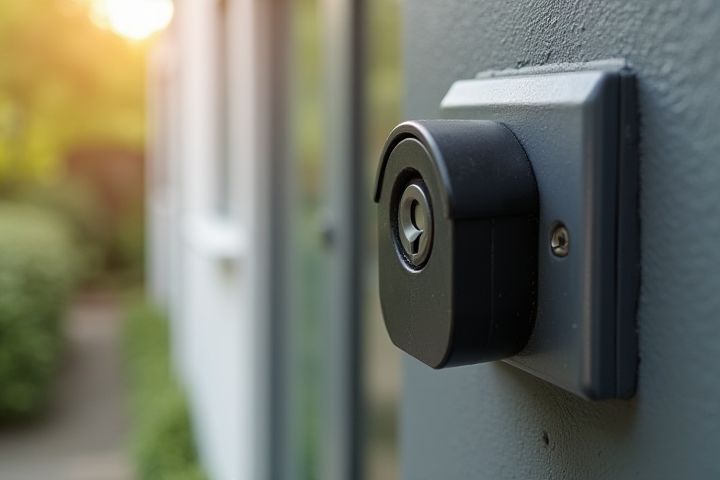
Smart houses provide enhanced security features that traditional homes may lack, such as smart locks, surveillance cameras, and alarm systems that can be monitored remotely via your smartphone. These systems typically use encrypted data to protect against unauthorized access, offering users peace of mind through real-time alerts and remote access to home functions. However, vulnerabilities can arise from weak passwords and outdated firmware, making regular updates and strong user authentication essential for maintaining security. In your quest for a smart home, consider devices from reputable manufacturers that emphasize cybersecurity as a critical component. By integrating these safety measures, you can greatly enhance the overall security of your smart home environment.
Are Smart Houses Safe
Data Encryption
Smart houses prioritize safety through robust data encryption methods, ensuring that sensitive information transmitted between devices remains secure from cyber threats. End-to-end encryption protocols protect your personal data, preventing unauthorized access to your smart home systems, including lighting, security cameras, and smart thermostats. Regular software updates for devices further enhance protection, addressing vulnerabilities and strengthening overall system resilience. In a well-secured smart house, your privacy is protected, making it a safer environment for you and your family.
Device Authentication
Device authentication in smart houses is crucial for ensuring security and protecting your personal data. This process verifies the identity of devices connected to your home network, preventing unauthorized access and potential breaches. Strong authentication methods, such as two-factor authentication (2FA) or biometric verification, significantly enhance your smart home's safety by making it more difficult for intruders to gain control. By implementing robust device authentication protocols, you can create a safer environment that safeguards your smart devices and the valuable information they hold.
Network Security
Smart houses significantly enhance your convenience, but they also introduce unique network security vulnerabilities. Connected devices, such as smart thermostats, security cameras, and lighting systems, often require an internet connection, making them potential entry points for cyberattacks. Implementing strong passwords, regular firmware updates, and network segmentation can help safeguard your home's network against unauthorized access. Awareness of emerging threats and best practices in smart home security is crucial for creating a secure living environment.
Privacy Concerns
Smart houses often integrate devices that enhance convenience and efficiency, but they also raise significant privacy concerns. Data collected from smart devices, such as thermostats, cameras, and voice assistants, can expose sensitive information about your daily routines and personal preferences. For instance, a 2022 survey indicated that 60% of smart home users were worried about unauthorized access to their data. To mitigate these risks, it's crucial to implement robust cybersecurity measures, including regular software updates and strong, unique passwords for all connected devices.
Software Updates
Smart homes rely on regular software updates to maintain security and functionality. Manufacturers periodically release these updates to patch vulnerabilities, improve device performance, and ensure compatibility with new technologies. By enabling automatic updates on your devices, you can significantly reduce the risk of cyber attacks and enhance the overall safety of your smart home environment. Ensuring that your smart devices are consistently updated is essential for protecting personal data and maintaining a secure living space.
Vulnerability Patching
Smart houses provide advanced security features, but they can be vulnerable to cyber threats if not properly maintained. Regular vulnerability patching is essential to protect interconnected devices from exploitation, as outdated software can harbor security weaknesses. You should frequently check for firmware updates from manufacturers to ensure your smart home ecosystem remains secure. By prioritizing effective patch management, you enhance the safety of your smart home, safeguarding your personal data and privacy.
Two-Factor Authentication
Smart houses can significantly enhance security through the implementation of Two-Factor Authentication (2FA). By requiring not just a password but also a secondary verification method, such as a text message code or biometric scan, 2FA adds an extra layer of protection against unauthorized access to your smart home devices. This is crucial, as smart homes often contain sensitive information and control over various systems like lighting, heating, and surveillance cameras. Ensuring your smart home network is fortified with 2FA can help safeguard your privacy and reinforce the overall security of your living environment.
User Education
Smart houses enhance safety through user education about device management and cybersecurity. For instance, 70% of residential burglaries could be prevented by utilizing smart security systems that include cameras and motion sensors. By regularly updating firmware, you can reduce vulnerabilities, as a staggering 90% of cyberattacks exploit outdated software. Understanding privacy settings on your smart devices empowers you to safeguard personal data, ensuring your home remains both intelligent and secure.
Reliable Backups
Reliable backups are a crucial aspect of smart home safety, as they ensure that your data and devices remain functional even after failures. Regularly backing up data, such as security camera footage, home automation settings, and personal information, protects against loss due to cyber attacks or device malfunctions. Consider utilizing cloud storage solutions or local backup systems to safeguard your home's smart technology. By prioritizing these measures, you can enhance the overall security and reliability of your smart home environment.
Secure Passwords
Secure passwords play a crucial role in the safety of smart houses. It is recommended that you use complex passwords comprising at least 12 characters, including upper and lower case letters, numbers, and special symbols. Regularly changing your passwords every three to six months can further enhance security. Implementing two-factor authentication adds an extra layer, making it significantly harder for unauthorized users to gain access to your smart home devices.
